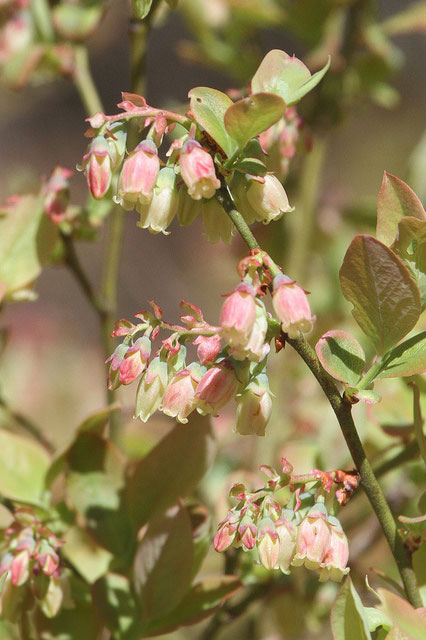“Helping You Find Plants That Work”
by Ana Morlier , The Crazy Plant Lady
What feels like the last holiday, Easter, will soon be here. The last opportunity to attain candy (other than buying it yourself) is coming up. For gardeners, the chocolate Easter candy isn’t the only thing to look foreward to. Spring has sprung!
Even if you aren’t a green thumb, you too can join the excitement as everyone gears up for planting season. I’m not exactly “sowing” I’m a planting professional, but I did want to recommend an awesome and highly beneficial perennial to your garden.
Readers of The Banner, I present to you a candidate that resolves all your garden worries!
The Early Lowbush Blueberry — The All-Star Greenery

Here are a few highlights of the early lowbush blueberry:
It flowers from April through May, so not only can you catch sight of the blooms, but pollinators can get a head-start on assisting your garden;
Its (fruits) are edible;
It’s native to Maryland;
You’ll attract bees, butterflies, and other pollinators. In some cases, even the Maryland favorite, the Orioles, box turtles, chipmunks, and other animals, come to this bush;
It’s used for any soil condition.
I know that was a lot of excitement for what seems like a boring shrub, but when I saw that it fits this much criteria for my mediocre gardening skills, I got pretty excited. With the timing of the blooms so close to the current date, you’ll have your first view of spring beauty promptly! The flowers come in colors from white to pink, so they won’t be hard to miss. In the fall, the leaves turn a light crimson.
Some things to watch out for:
Naturally, it actually thrives after forest fires because the factors of competition from other plants and shade from trees is eliminated. It is a good idea to expose it to as much sunlight as you have room for, and provide lots of space to grow;
As stated, this shrub attracts pollinators and animals alike, so if you want blueberries for yourself, you have to watch closely and take preventative measures. Be careful not to use any sort of pesticides or chemicals, as this can be hazardous to other beneficial species;
Prune away any dead or weakened leaves or branches;
While soil texture doesn’t matter, this is an acid-loving shrub. The Spruce recommends “A slow-release, soluble, ammonium nitrogen granular variety that is marketed for plants like rhododendrons or azaleas.”;
It produces rhizomes, which are roots that penetrate and spread out deep underground. This can provide competition for other plant life, so allot lots of space for the shrub.
If you are afraid of any harm from gardening, don’t worry (Bee happy)! Bees are perfectly friendly, as long as you leave them alone (which I find quite unbelievably adorable). If you “hive” a fear of bees, and one comes close to you, stand completely still. They won’t understand what the buzz is all about and will leave you alone. It’s usually wasps and yellow jackets that will bug you the most, and they come out more so when summer is in full swing.
The early lowbush blueberry is without thorns, spines, or prickles, so you don’t have to be too cautious when picking blueberries or just checking on the plant. When harvesting, be gentle with the young sap. Hand-picking is the easiest on the plant and, in my opinion, the most fun!
This plant is quite a delight—beautiful colors, tasty fruit, and ground cover. I hope you have a berry good planting season!
*Credit to Go Botany, University of Maryland Extension, The Spruce, Maryland Biodiversity Project, Punopedia, and the Honey Plants Calender.

